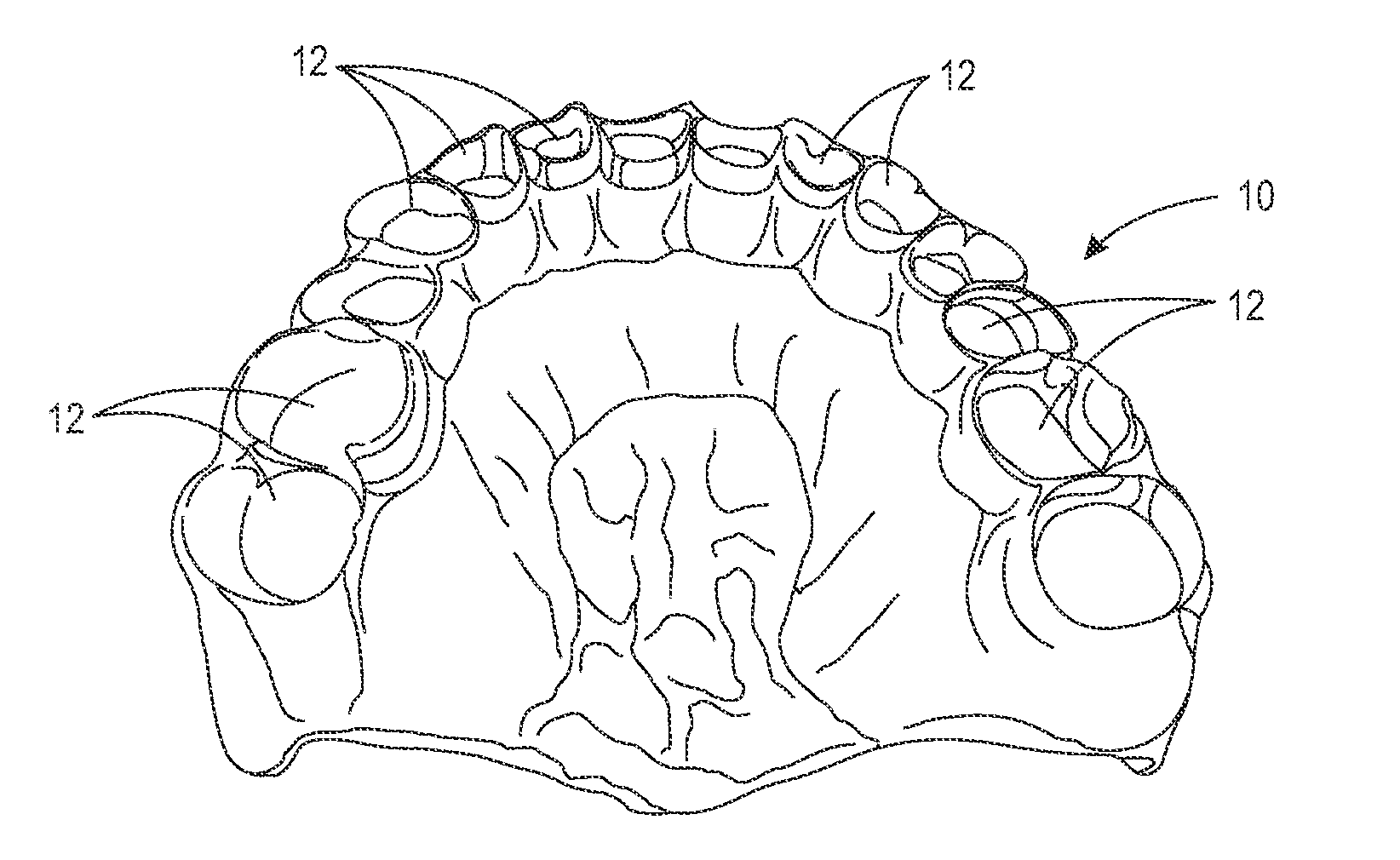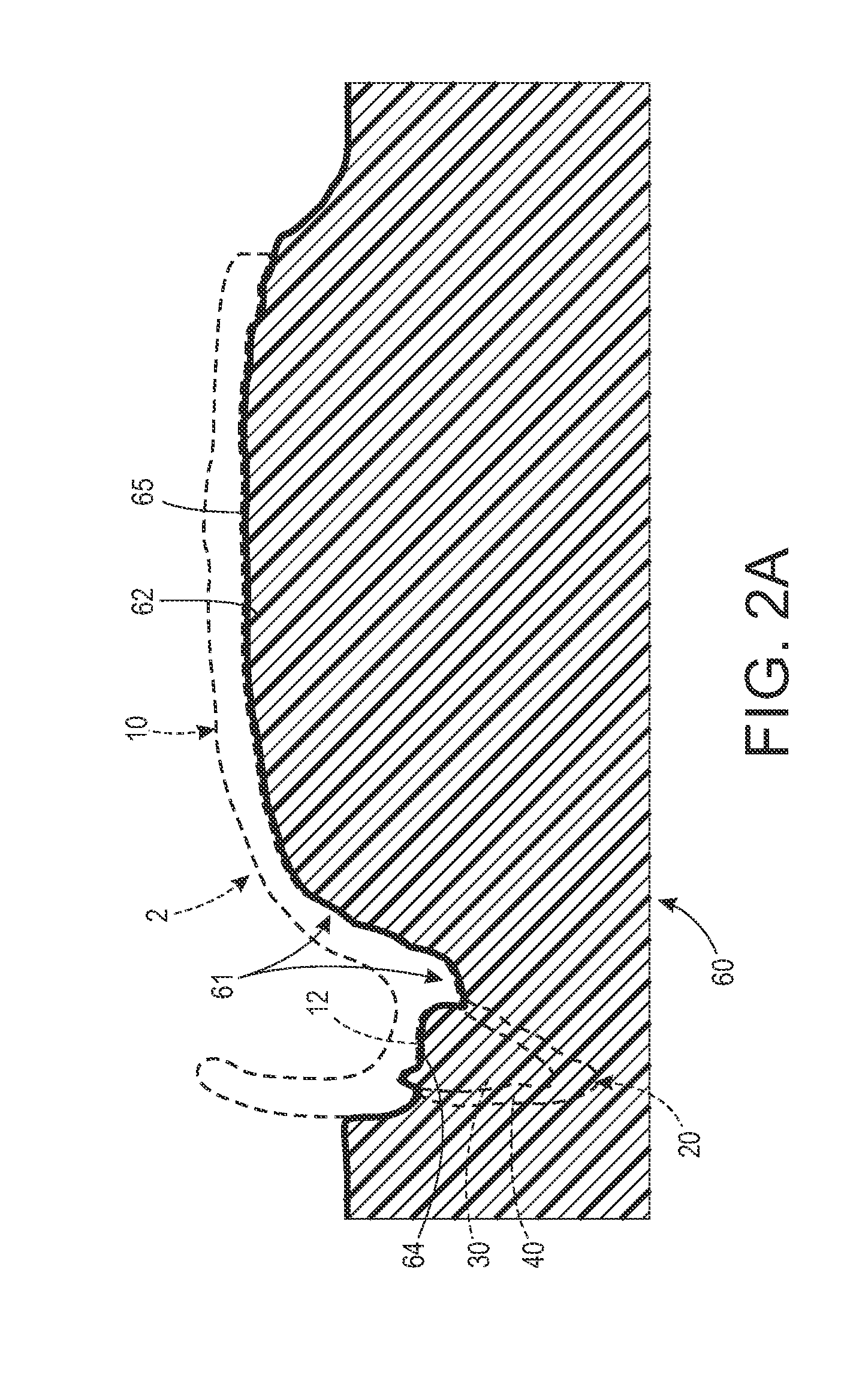Heretofore, the manufacturing of dental prostheses has been a highly labor intensive process requiring multiple fittings to a patient in need of them, and many steps that must be performed at the hands of skilled artisans.
It can be seen that in the above highly labor-intensive process, each of these steps introduces a potential for a
processing error.
Even the slightest error, such as the investment being too cool, or the
powder / water ratio of the investment being incorrect, may cause the crown to fit too tightly in the patient's mouth, resulting in improper
occlusion (upper and lower teeth engagement).
The crown may thus have to be scrapped or reworked through at least one iteration of additional process steps at considerable cost to the patient, dentist, and / or manufacturing lab.
For example, subtle irregularities often found in anterior (front) teeth are difficult to replicate using CAD /
CAM processes.
Manual methods of making anterior fixed prosthetics enable unlimited aesthetic options, only limited by the creativity of the artisan (
dental laboratory technician).
Some CAD /
CAM techniques involve the use of milling a monolithic block of
ceramic that does not deliver optimal aesthetics (example: too opaque), especially for anterior applications.
However, this manual step may defeat the primary benefit of CAD /
CAM: precise dimensional accuracy.
However, this
system generates only a CAD replica in plastic (made by a 3D printer), which requires subsequent extensive
processing to obtain a
metal partial denture framework.
Hence there are still many error-prone steps after the CAD replica is made that can result in a poorly-fitting partial denture framework.
However, the materials available to use in three-dimensional printers are neither as dense nor cross-linked like a normal plastic artificial tooth.
Hence a problem remains with the resulting
dentures because the denture teeth that are made with available 3D printing
plastic materials are not sufficiently wear-resistant.
A problem with this approach is that most of the teeth must be adjusted to some extent to fit within the space required in order for the denture to properly occlude with the opposing arch of the opposing denture or the patients existing opposing teeth.
Manual labor is required for the adjustment of teeth; therefore, the potential for errors is introduced into the manufacturing process.
Another problem with this method is that artificial teeth are not consistently sized.
Over the course of use, material from the wall of the mold wears away, resulting in a mold cavity increasing in size.
Additionally, molds contain multiple cavities, and the wear is not necessarily uniform.
Thus the combination of wear with time and non-uniform wear of a mold results in the production of teeth that vary dimensionally within any given
tooth size that is intended to be produced using the mold.
There is thus a problem in that the dimensional variation of artificial teeth is significant with respect to the dimensions of the sockets formed by the milling
machine in which the teeth are to be fitted.
However, this practice is undesirable.
Additional labor is required for this step, which is costly and which is likely a manual process which can introduce potential errors to the denture fabrication.
The risk of denture tooth “pop-outs” (debonding from the denture base) is more likely because the volume of bonding material is quite small relative to the conventional method of bonding denture teeth, and the bonding surface may be restricted to the circumference of the denture tooth which interfaces with the denture base (and limited bonding of the area of the tooth that opposes the
occlusal surface because this area has been adjusted to rest on the “floor” of the socket).
In addition, like the conventional approach, the patient will not see the final configuration of the denture until the delivery appointment, at which time the patient may reject the denture based on aesthetics.
The step to provide diatoric holes is yet another
processing step that increases cost and introduces the potential for further errors, such as artificial tooth fracture.
However, it is not suitable for long-term
dentures because the artificial teeth made in this manner look unaesthetic.
This process is not compatible with the above overall denture fabrication process in which the full set of teeth are milled from a single piece of plastic and bonded to the milled denture base.
One aspect of this technique is that the milling steps require significant time because the geometry to be milled is intricate and tolerances must be held to tight standards.
In addition, many lower cost desktop mills do not have the speed or reach to
cut-away the unneeded material efficiently.
This significantly reduces the likelihood of the artificial teeth detaching from the denture base (referred as a “pop-out”), and the formation of dark demarcation lines around the junction of the artificial teeth and artificial gingiva due to
bacterial growth.
(The latter problem is often found in
dentures made with porcelain artificial teeth because there is no
chemical bond between the denture base and the teeth.)
 Login to View More
Login to View More 


